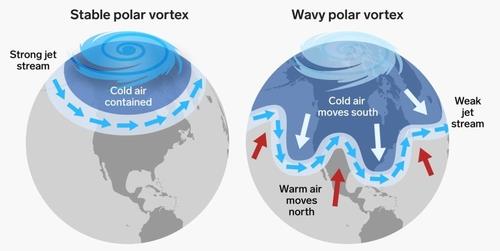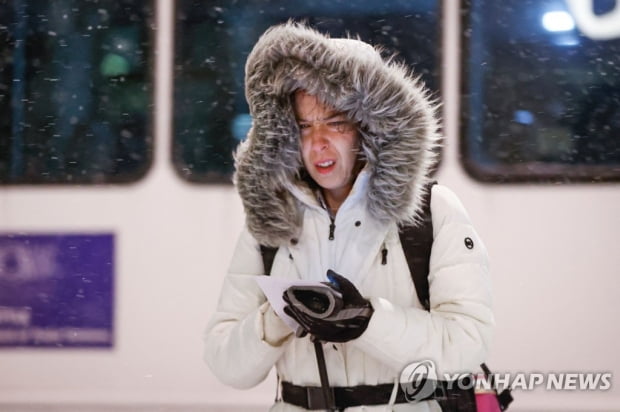A cold, dry atmosphere hovering over the North Pole… Moves south with the jet stream and causes severe cold
Is the jet stream weakening due to ‘Arctic warming’? Divided opinion in science
Before Christmas, a record cold snap of over -50 degrees Celsius hit the US and attention is focused on the “extreme vortex” that has been blamed for the severe cold.
The cold, dry atmosphere that recently descended from the North Pole has descended over the American continent on the 22nd (local time), causing the perceived temperature to drop to -53 degrees Celsius in Chicago and -54 degrees Celsius, according to The New York Times (NYT). Celsius in Memphis, Tennessee the previous day.
As the cold snap is expected to be accompanied by a blizzard, travel disruptions, such as flight cancellations, are expected to follow ahead of the Christmas to New Year peak season.
The reason for such a strong cold snap in the United States is that the “polar vortex”, a mass of cold, dry air that swirls around the North Pole, has moved south towards the American continent.
The Arctic vortex is strongest and cools down during the winter months when little sunlight reaches the North Pole.
Under normal conditions, polar vortices are trapped in the jet stream, a strong westerly wind that blows from the upper troposphere, and cannot travel south and stay around the North Pole.
However, if the jet stream weakens and stretches downward, the polar vortex together with the jet stream deviates from its course and moves south, bringing severe cold to the American continent.

If the movement of the polar vortex, which should be located at the North Pole, accelerates, the temperature can drop by several tens of degrees in a few hours in areas exposed to the cold air of the polar vortex.
Such anomalies can continue for up to several weeks, until the polar vortex returns to its original position and stabilizes.
There is no consensus in the scientific community as to why this happens.
“I hope there are clear answers,” said Dr. Steve Barbrus, a climate scientist at the University of Wisconsin.
Dr Barbrus, along with Jennifer Francis, a researcher at the Woodwell Center for Climate Research in Massachusetts, advanced a hypothesis in 2012 that Arctic warming could affect the path of polar vortices, but “unfortunately the situation remains ambiguous,” he said. stated. .
Some scientists say the jet stream has weakened due to the warming Arctic.
Dr. Judah Cohen, who studies climate science at the Atmospheric Environment Institute in Lexington, Massachusetts, USA, this year published a paper linking the cold snap that hit Texas last year to global warming ‘Arctic.
Dr. Cohen stated in the thesis that large and strong atmospheric waves form in warm environments and that the warming of the Arctic caused the jet stream waves to ripple with a greater width than normal conditions and that this had a chain Effect on the polar vortex.

Some scientists find it difficult to find a correlation between Arctic warming and the jet stream.
Researchers at the University of Exeter in the UK, in a paper published in the journal Nature Climate Change in 2020, found that short-term trends in climate-related measurements, such as cold extremes and current waveforms jet observed in the 1990s and 2000s have been inconsistent over the last decade.
This can be seen as a basis for weakening the argument that rising Arctic temperatures affected the jet stream.
Ted Shepard, a climate scientist at the University of Reading in the UK, has put forward another hypothesis: Sea surface temperatures in the tropical Pacific Ocean could be affecting Arctic air masses that disrupt jet streams and polar vortices.
/yunhap news


